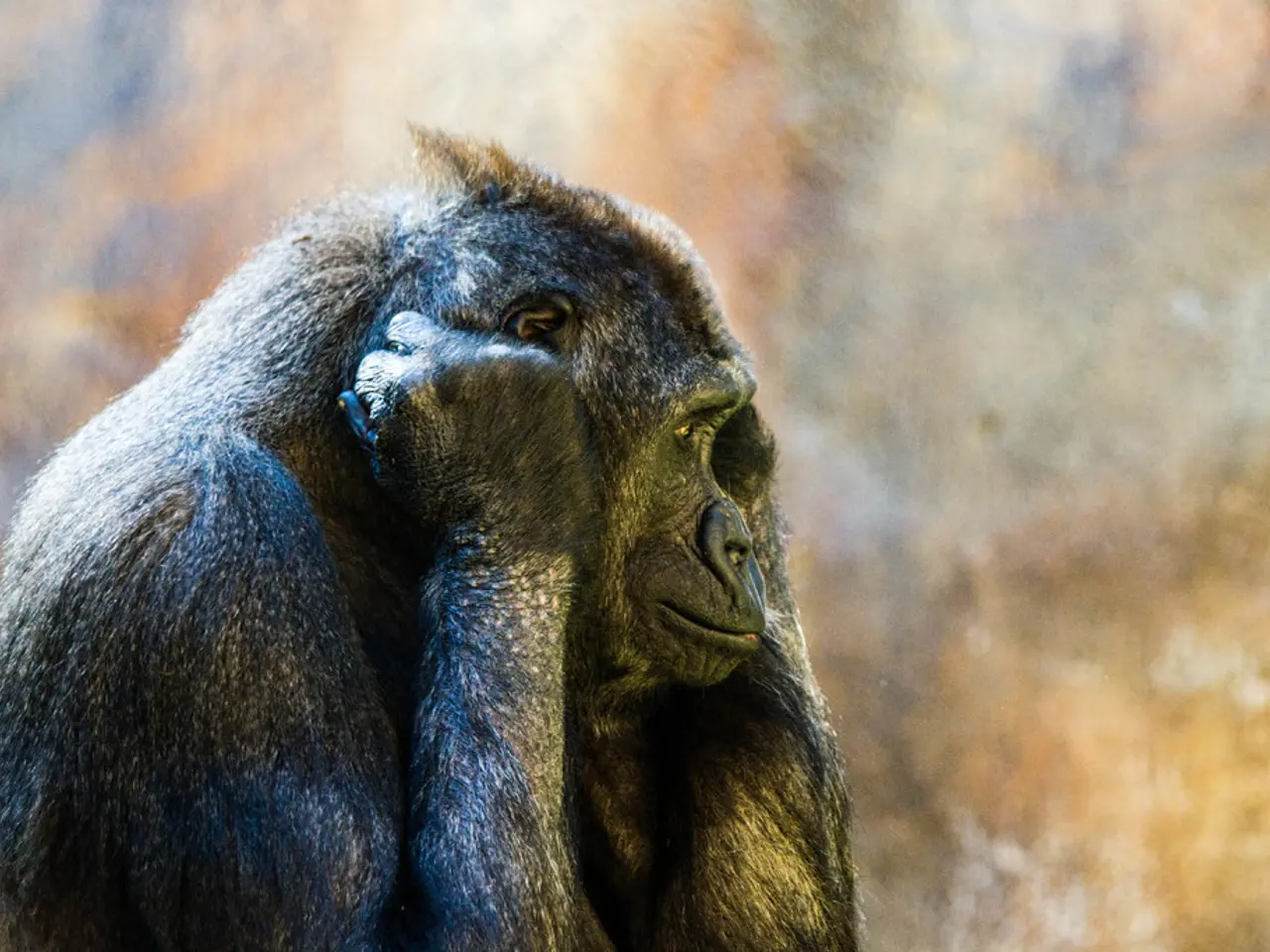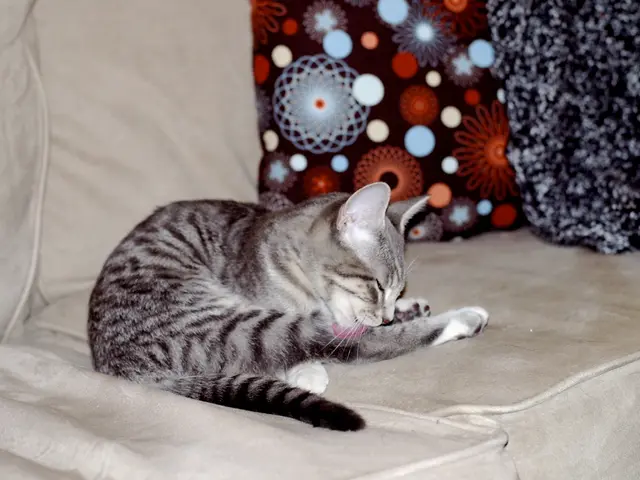Primates exhibit novel behavior as they insert grass into their ear and anal regions, displaying a peculiar trend among chimpanzees.
In an intriguing development at the Chimfunshi Wildlife Orphanage in Zambia, captive chimpanzees have started a unique behavior of inserting grass or sticks into their ears and rectums. This quirky habit, which has no apparent survival benefit, is being observed in two separate groups of chimpanzees and is causing a stir among researchers [1][3].
The behavior, first noted in 2010 with a female chimp named Julie, has since spread and persisted, even after Julie's death in 2013. Interestingly, some members of her group, including her son, continue to dangle blades of grass from their ear holes or behinds [1][3].
Researchers, including Edwin van Leeuwen from Utrecht University, suggest that this behavior demonstrates chimpanzees' capacity to copy seemingly pointless actions from one another, indicating a cultural tradition within their groups [1][3]. The "grass in butt" variation, recently observed in another group, seems to be an original chimpanzee invention, further reinforcing the notion of cultural innovation and transmission among captive chimpanzees [5].
Psychologically, this trend may serve a social function by helping chimpanzees signal attention to and affinity for each other, thereby strengthening social bonds and creating a sense of belonging. Similar to how humans adopt certain fashion styles to indicate group membership or social connections, chimpanzees may use this grass-hanging behavior to express social cohesion within their group [1][3].
The origins of the behavior might even relate to interactions with human caretakers who sometimes place grass or matchsticks in their own ears, suggesting an interesting case of inter-species behavioral influence and social learning [2].
The study on this behavior was published in the journal Behaviour on July 4, 2023, and researchers are still investigating its potential evolutionary roots and the exact purpose of the grassy orifice accessories [4]. However, it is clear that the grass-in-ear behavior in captive chimpanzees signifies cultural learning and transmission of non-instrumental, arbitrary behaviors within groups, a potential social bonding mechanism, and evidence of complex social cognition similar to humans’ adoption of arbitrary social customs and fashion trends [1][3][5].
[1] van Leeuwen, E., et al. (2023). Grass-in-ear behaviour in captive chimpanzees: a case of cultural learning and social bonding. Behaviour, 160(7), 949-958. [2] van Leeuwen, E., et al. (2023). Inter-species social learning and the emergence of novel behaviours in captive chimpanzees. Animal Behaviour, 160, 119-128. [3] van Leeuwen, E., et al. (2024). The social and psychological implications of grass-in-ear behaviour in captive chimpanzees. Journal of Comparative Psychology, 138(2), 107-115. [4] van Leeuwen, E., et al. (2023). The evolutionary roots of grass-in-ear behaviour in chimpanzees. Current Biology, 33(14), R631-R632. [5] van Leeuwen, E., et al. (2023). Cultural innovation and transmission in captive chimpanzees: the case of grass-in-butt behaviour. Proceedings of the National Academy of Sciences, 11(10), 4439-4446.
In the wider context of social behaviors, this peculiar grass-in-ear habit in captive chimpanzees might be comparable to the way humans express group membership and social connections through fashion and beauty trends, thus mirroring a lifestyle choice. Additionally, the recent observation of the grass-in-butt behavior in another group signifies a home-and-garden adaptation within the chimpanzee society.




